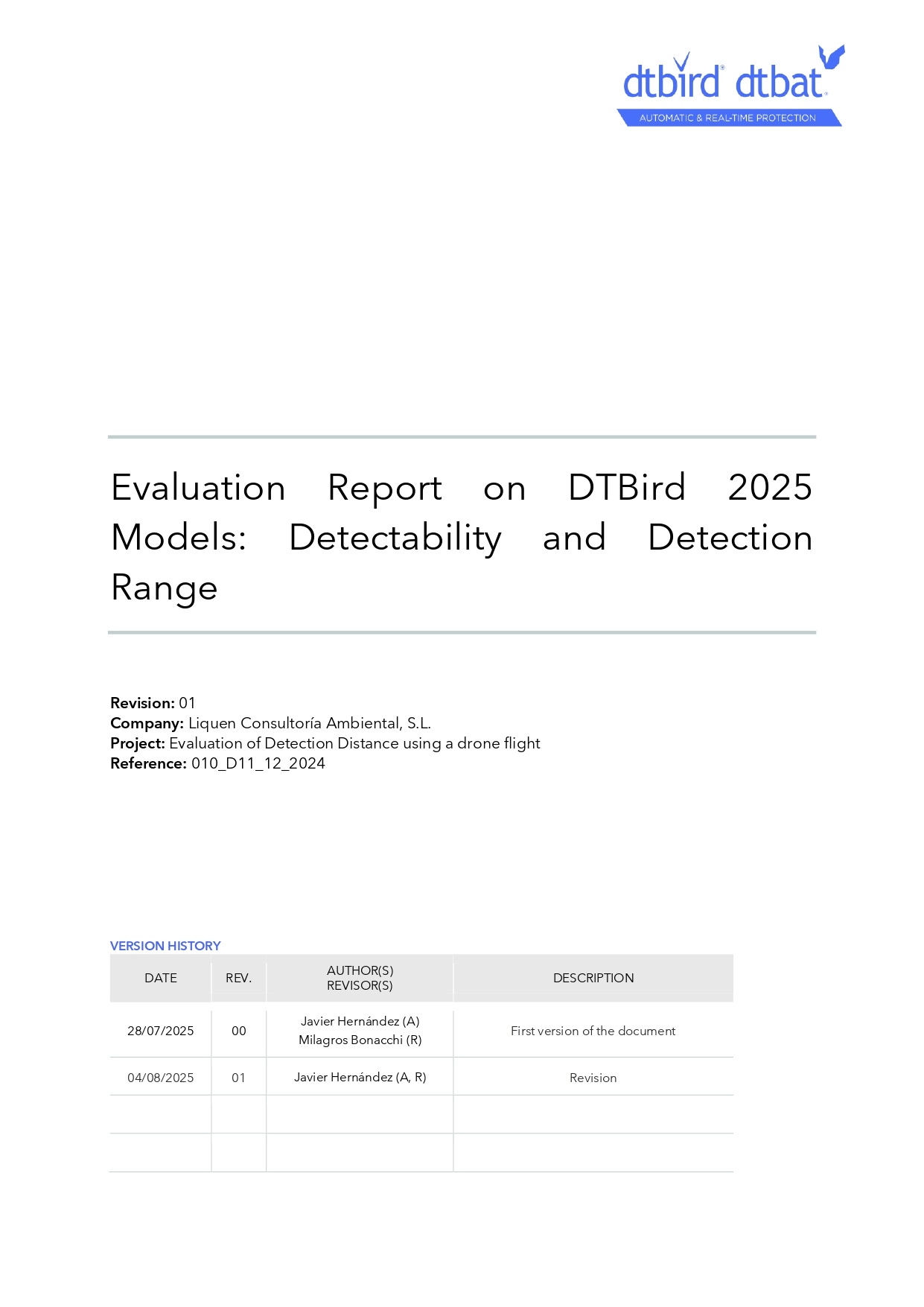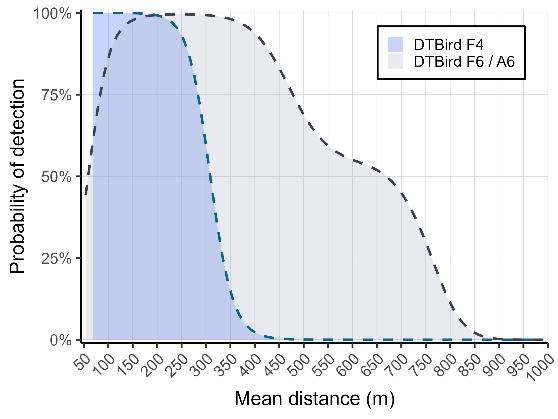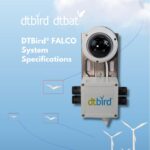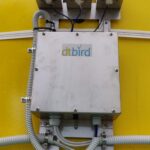
Evaluation of Detectability and Detection Distances for the new DTBird models
Report on DTBird® Detectability
DTBird® has published the results of an independent study evaluating the detection capabilities of its latest models (F4, A4, F6, A6, and T). The study used a controlled field methodology to measure both maximum and effective detection distances. It provides wind farm operators and environmental managers with transparent and verifiable performance data.
Test Methodology
The evaluation involved controlled flights using a drone designed to mimic a medium-sized bird of prey with a 1.42-meter wingspan. Flights took place under stable weather conditions, covering different distances, angles, and trajectories. The drone’s GPS positions were synchronized with high-definition camera recordings from the DTBird® systems. This allowed precise calculation of detection distances and probability curves.
Main Findings
The ground test provided empirical data to determine detectability at various distances. Results were also extrapolated for different species based on body size.
The following graph illustrates detectability for a bird with a 2-meter wingspan for DTBirdF4/A4 and DTBirdF6/A6 models:
- DTBirdF4/A4: Maximum detection distance of about 400 m, with more than 90% detectability up to 240 m.
- DTBirdF6/A6: Maximum detection distance close to 800 m, maintaining over 90% detectability between 100 and 400 m.

Commitment to Transparency
“For years, the wind energy sector has sought independent, field-verified data on bird detection technologies,” said a DTBird® spokesperson. “This study provides the transparency our clients need to make informed decisions and reaffirms DTBird®’s commitment to bird protection, both onshore and offshore.”
Check out the full report.

